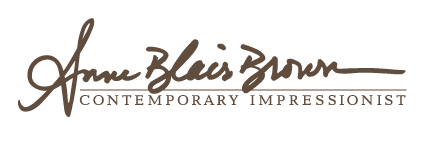I am passionate about teaching. Seeing my students grow confident on their painting journeys is my main motivation.
I don’t teach in a “how to paint a chair / figure / tree” style. I would rather empower folks to see painting in a “big picture” sense so that they can develop their own voice and therefore convey their perception of a chair, a figure, or a tree.
I can attest to the fact that once your painting process becomes intuitive, there is more joy in your artistic endeavors. Isn’t it really about joy, anyway? So even if your drawing skills are not where you want them or your color sense is not yet honed, I believe it is still 100% possible to make beautiful art. You may hear to the contrary, but to that I say phooey.
So how can your painting become more joyful and intuitive, even if you lack academic mileage? I suggest shifting focus from what you are painting to why you are painting.
Sure, I build my paintings on tried and true foundational elements. I give a lot of preliminary thought to the academic necessities through sketching and planning. But, after I give my left brain that nice hearty meal, I send it to bed. Then, when the paint really starts flinging, it’s time to get down to the “why” I paint.
I want to share my feeling of a scene, not feverishly try to render it perfectly (see March 19, 2020 blog, “It Doesn’t Have To Be Perfect”). Perhaps through my painting I can send you to a relaxing porch or a comfy sofa in dappled sunlight, creating a peaceful sense of place for you. Maybe through my brushwork I can leave a little mystery in the painting, inviting you to linger and paint the rest of the painting in your own head. Or, perhaps my color choices give you that happy-flippy feeling in your tummy. For me, it is all about connection.
So, why do YOU paint? If the answer to that question is to render objects, then take drawing classes and practice, practice, practice. Nothing wrong with that. But if you want to make your mark (pun intended) and connect with your art and your audience on a deeper level, then let your vision and passion be the real subject of your art. The rest will fall into place.
“Every artist dips his brush in his own soul, and paints his own nature into his pictures.”~Henry Ward Beecher
“Back Home” 16x16 oil on linen

